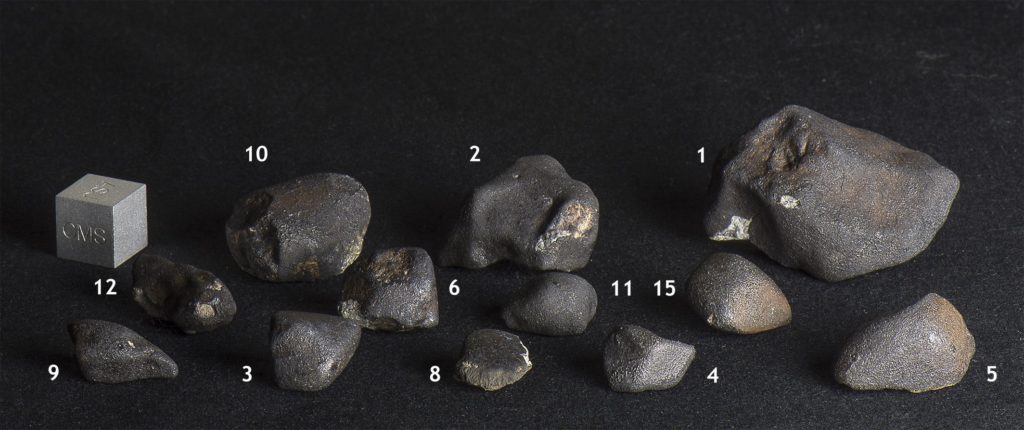Like a detective fixated on deciphering the sequence of events in a crime, astronomers use every available tool in their arsenal to build an understanding of the universe. Such is the case with Lowell Observatory’s Nick Moskovitz and fellow celestial sleuths as they looked to profile an intruder from outer space. Incorporating a variety of analytical techniques, applied to both direct observations of the event and forensic evidence collected afterwards, they’ve been able to characterize a 2016 meteorite fall in eastern Arizona.

Twelve meteorites recovered on the 22nd and 23rd of June, 2016.
The story starts on June 2, 2016, when at 3:56 in the morning, a super-bright meteor — commonly known as a fireball — streaked through the skies of eastern Arizona. More than 400 people, who for whatever reason were awake at that time, witnessed the event and reported it to the American Meteor Society, a non-profit scientific organization that collects data and encourages research on such meteoritic phenomena.
Several of the witnesses photographed the streaking light, and the event was also captured on sky-surveying cameras set up in Flagstaff, Payson, and Albuquerque. The Flagstaff camera system is run by Moskovitz and goes by the acronym LO-CAMS, for “Lowell Observatory Cameras for All-sky Meteor Surveillance.” It is based off a similar concept developed by Peter Jenniskens of the SETI Institute in Mountain View, California and consists of arrays of 16 off-the-shelf security cameras to gather what Moskovitz calls a “fly’s eye approach to recording the night sky.”
[br]
For the rest of this tale, read the Arizona Daily Sun article from which this was adopted.
[br]
Read the fill scientific paper describing the characteristics of the “Cibecue Star Stone” here.